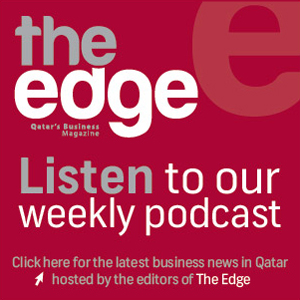Qatar property market performs well in H1
Nick Witty, director, real estate, Deloitte, Qatar, in an interview with The Edge, analyses the performance of Qatar’s real estate industry in first six months of the year.
How would you like to assess the performance of Qatar’s real estate sector in the first half of the year (H1)?
The market has performed well over the last six months both in terms of rental and sales growth and particularly in relation to land. There are no indications that this trend will not continue for the remainder of the year and beyond.
What are the factors attributed to this growth and strong performance?
The market has, historically, been characterised by speculative development across most asset classes, meaning it has been supply led rather than demand driven. Qatar retains the highest per capita gross domestic product (GDP) globally, fuelled by a strong economy, available finance and a growing expatriate population. However, if the gap between supply and demand closes, this could change in the future.
Qatar is still a very small real estate investment market considering the fact that only a handful of projects are open to outside investors. What do you think is working in favour of Qatar’s real estate sector?
Qatar is still considered an emerging market in real estate terms but the economic fundamentals remain positive and there is strong government backing. Non-Qataris are limited to investing in one of the 18 Investment zones and only four, the Pearl, West Bay Lagoon, Lusail and Al Khor Resort, offer 99-year usufruct rights. The major investors in the country continue to be nationals and the government. From a residential perspective, retail mortgage funding, whilst still readily available and cheaper than it was three years ago, remains out of the reach of many, given the low loan to value (LTV) criteria set by the various lending institution
How do you see the performance of Qatari real estate companies?
The companies have typically performed in line with the trends of the general real estate market and benefitted accordingly. Nevertheless, some of the property companies have also extended their investment horizons and are investing overseas to diversify their portfolios and mitigate risk.
Which segments are actually seeing more growth?
Development across all asset classes continues, however, there is an emphasis on both retail and commercial property.
There are currently 13 principal malls in Doha providing 546,500 sqm of retail space of which Villaggio and City Centre Malls account for 55 percent of the total area. Additional, non-mall retail can be found on the Pearl, at Katara and Souq Waqif. There are 14 malls planned or already under construction and there is a proposed 17,000 sqm extension to Villaggio Mall, which combined will increase total, formal gross leasable retail area to approximately two million sqm by the end of 2017. Again medium term over supply is likely with retailers likely to become more discerning, seeking representation in those developments in preferred destinations, supporting a better tenant mix.
There is currently approximately 1.7 million sqm of Grade A office accommodation in Doha with most demand being for units of up to 250 sqm and serviced offices capable of accommodating two to four people.
Up to the end of 2018 a further 2.175 million sqm will be delivered to the market. Assuming a medium growth demand scenario, it is estimated that total take up of this additional accommodation would take until 2023, with demand likely to come mainly from the public administration, defense, construction and administrative support services sectors. Thus, if all the proposed pipeline projects are completed by 2018, there is likely to be oversupply, potentially for up to five years, during which time the more functional, better managed buildings with the highest car parking ratios are likely to attract discernable occupiers.
Has there been any impact of oil price fall on the real estate sector? What is the outlook for the rest of the year?
It is widely accepted that there is a very limited correlation between gas and oil prices and as one of the major global gas producers Qatar is, to a degree, shielded from the effects of falling oil prices although the government has recently implemented some cut backs in non-essential infrastructure projects. From a real estate perspective, it is likely that the positive trend will continue during 2015.
In the coming years, there is likely to be a slowdown in new development with more of a focus on population distribution through the implementation of sustainable urban expansion policies reflected in the Qatar National Vision 2030.
Do you expect any price correction to take place in near future?
Price corrections are difficult to predict in any emerging market and Qatar is no different, however, as long as the economic fundamentals remain positive and there is ongoing governmental support, any significant price correction in the near term is unlikely.
Like this story? Share it.






